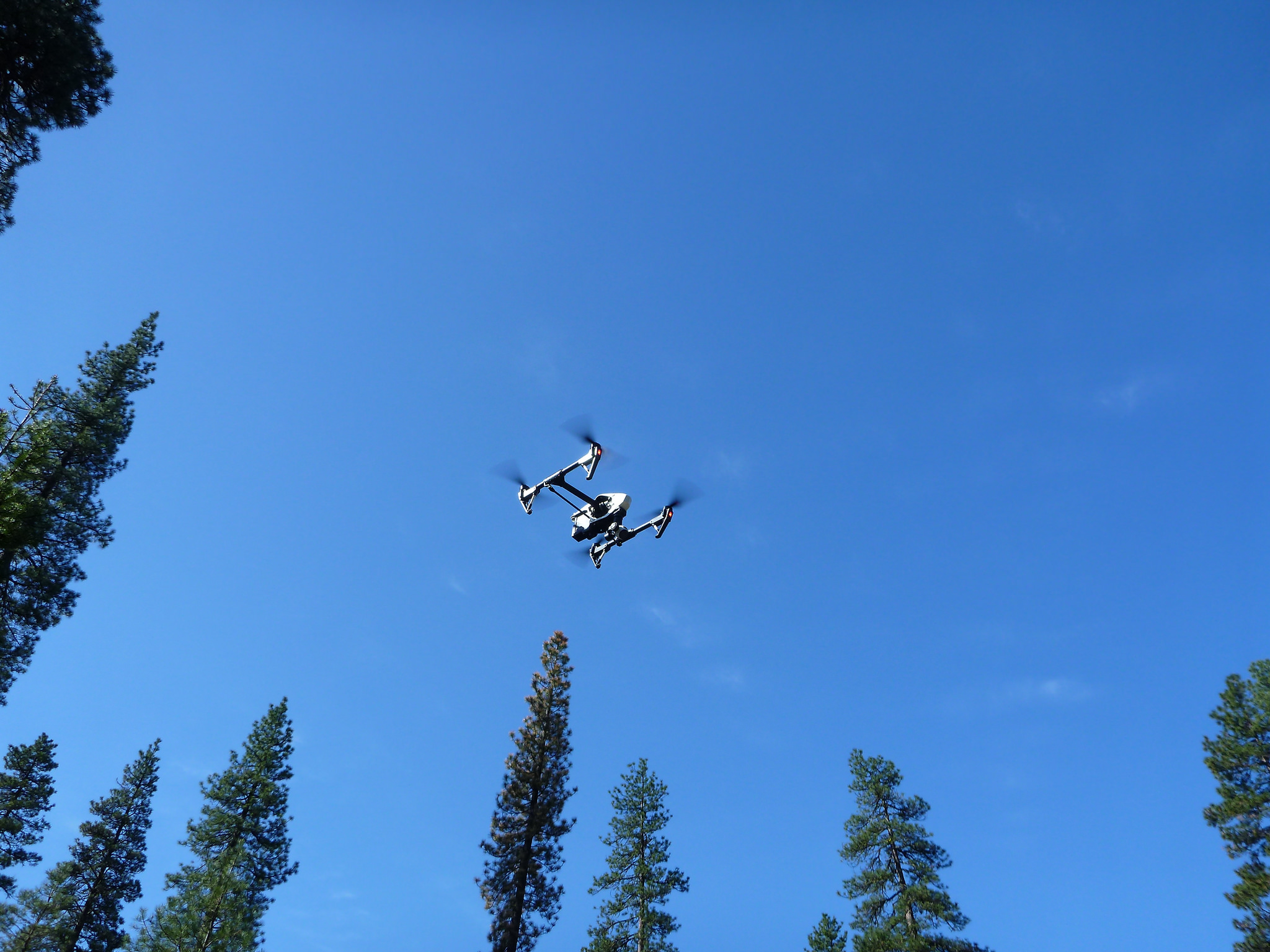
Unmanned aircraft systems, like this quadcopter, provide numerous benefits over manned aircraft for wildlife research. Image: Martin Criminale, Flickr
By Marie Orttenburger
Perhaps drones could track feral swine to help oust the invasive critter from Michigan.
But local researchers are hesitant to employ the technology for wildlife management.
“There’s a lot of potential for uneasiness,” said Stephen Beyer, who manages wildlife research at the Michigan Department of Natural Resources (DNR).
He cited public fears of surveillance and intrusion on privacy.
“We’re a state agency,” he said. “There’s natural suspicion there.”
Brian Haroldson, a wildlife research biologist at the Minnesota DNR who used helicopters to count deer, also expressed concern.
“I’d like to see where the regulations are going to end up before I use them,” he said.
“There’s important advantages to having real-time decision making with personnel in the aircraft,” Haroldson said
Short battery life and limited range make Haroldson skeptical about drones.
“The potential is there — whether or not it will be realized, we have to wait and see,” Haroldson said. “It’s certainly not practical at the moment.”
But throughout the United States, drones have increasingly been use for wildlife research since the early 2000s, according to an article by Cassie Martin in “The Wildlife Professional.” That’s when the University of Florida’s Unmanned Aircraft Systems Research Program began using the technology for natural resource applications.
Ro Bailey, associate director of the Alaska Center for Unmanned Aircraft Systems Integration, said she’s optimistic. She sees public perception of such systems improving, and she says that more educated decision-making could make them practical for use by public organizations.
It’s “really not that tough” for a public agency to acquire certification to fly an unmanned aircraft system from the Federal Aviation Administration, Bailey said. Understanding what the aircraft will be used for and what equipment is best suited for the application will improve practicality as well.
Unpiloted aircraft can access areas that piloted aircraft can’t, either because it’s too dangerous or too expensive.
They’ve been used to count Chinook salmon nests in Snake River, Idaho, flying in the river gorges to collect that data for the Idaho Power Corp. Two helicopters crashed this way, killing two people and damaging the aircraft. In 2012, the Alaska Center for Unmanned Aircraft Systems Integration collaborated with Idaho Power to use unmanned aircraft systems instead——with great success, according to Bailey.
“The thing is, nobody got hurt,” Bailey said.
Unpiloted aircraft have also counted wildlife in places where weather makes it difficult for piloted aircraft to reach, Bailey said. Her organization was able to get a more accurate count of sea lions, which had been marked as endangered, because unpiloted systems could reach spaces that piloted aircraft couldn’t.
Piloting through nasty weather conditions between the launch point and the target destination is dangerous.
“With UAS, you shorten the distance by launching from the boat,” Bailey said. Boats can withstand the harshest weather conditions, and portable unmanned aircraft can take advantage of breaks in bad weather with shorter flight spans.
Bailey said researchers are also trying to determine if drones can be a less intrusive way to research certain species——such as walruses, which stampede and trample their young when approached by a helicopter.
As the technology is more frequently used, researchers will also have to contend with how animals react to it. A small but growing body of research is documenting animals’ behavioral and physiological responses to the systems.
Mark Ditmer, a doctoral candidate at the University of Minnesota, recently published a study in “Current Biology” investigating the changes in heart rates of bears in the presence of drones.
“I was surprised by the level of heart rate spikes we saw,” Ditmer said. Particularly since the bears appeared to ignore them.
“Our research brings up a lot of different questions,” he said.
Among them are how different species react to the aircraft, at what distance they become bothered and whether they can get used to them.
But the Michigan DNR’s Beyer said those aren’t all new questions.
“It’s just like anything else,” Beyer said. Whether a researcher uses a drone system or a radio transmitter collar, “you have to be concerned about how you’re handling an animal and how their behavior changes.
“It’s one of those tricky things about wildlife research.”